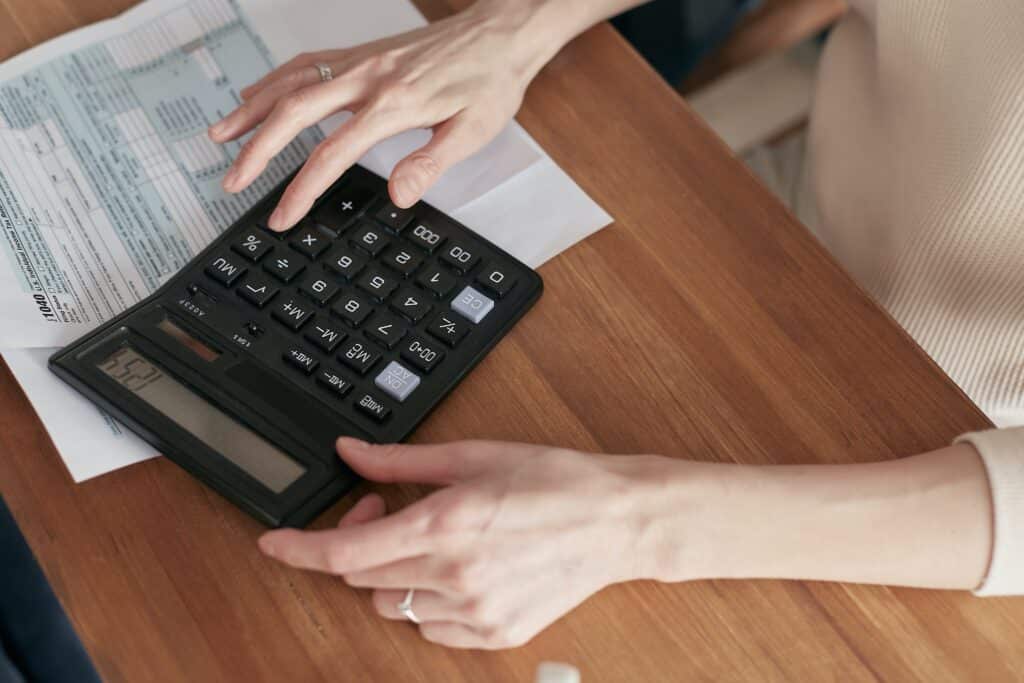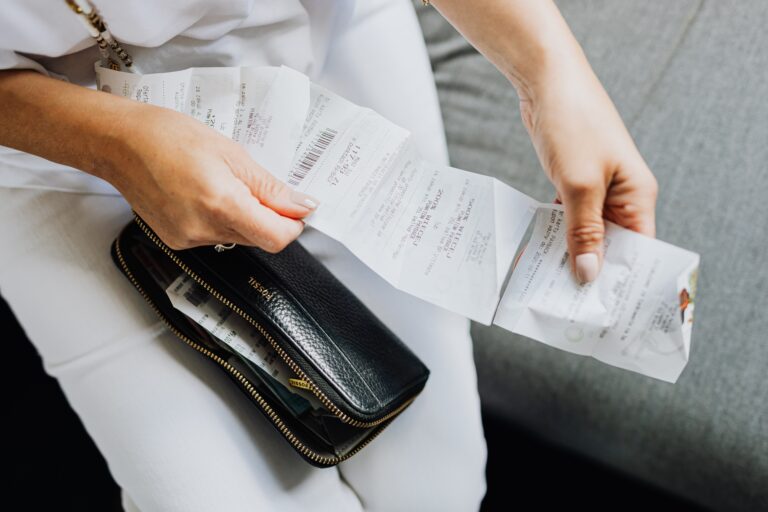If you are wondering, “What is an invoice?” you’re in the right place. Our team at Remitly created this guide to give you the full story of invoices.
If you’re an immigrant entrepreneur, managing your cash flow and getting timely payments from customers will be important to the success of your business. Often the invoicing process is how businesses obtain money from their customers, making it important to become familiar with it.
What is an invoice?
An invoice requests payment from someone. A typical invoice outlines the amount owed and the terms of the payment. It also provides details of the products or services rendered.
If you’re a small business owner, bookkeeper, independent contractor, or just looking to bill clients for your side hustle, you likely need to know about invoicing and what types of invoices apply to your work and your business.
Invoices can come in different forms. Some may be familiar to you. The paper receipts you receive at stores or restaurants are a common everyday invoice example. You have also probably received an invoice from an Internet service provider or a utility company in the form of a monthly statement.
Historically, invoices were paper-based records with multiple copies generated, so the buyer and seller could each keep a copy of the transaction for their own records. Nowadays, it’s more common to send invoices electronically than to mail print invoices.
You can print electronic invoices on demand or send them electronically by email or through an app to the parties involved in the transaction.
Read on to learn more about some common types of invoices and similar documents you may come across, as well as some popular tools for creating and managing invoices.
The basics of an invoice
First, an invoice should state on the first page that it is an invoice.
Beyond that, invoices may contain the following elements:
Invoice date
This is the date when you created the invoice to send to the customer.
Invoice number
An identifier or reference number is also called an invoice number. You can use this to track the receipt and payment of the invoice for internal and external reference. Companies typically assign invoice numbers sequentially for easy tracking.
Contact information
An invoice usually provides the business contact information of the seller or service provider in case of questions or billing errors. Some contact details you’ll want to include are the business address, phone number, and/or email.
Payment process and terms
Often, invoices outline the payment terms, such as:
- Due date: The final date that the recipient has to pay the invoice. After this date, the invoice becomes a past due invoice and may be assessed a late fee.
- Grace period: A set number of days after the due date during which late payments are assessed a fee
- Late fees: The amount of money added to past-due invoices
- Promotions: Information regarding any special discounts that were added to the invoice
- Payment options: Outlines how a person can pay, such as through a bank transfer, credit card, or a direct debit from the customer’s account
- Other invoice payment terms: Added information, such as whether you accept partial payments
Cost
This is a breakdown of money owed, including the unit price of an item, total units or items purchased, freight, handling, shipping, and any tax charges, such as sales tax.
Credit invoice vs. debit invoice
There are two main kinds of invoices: credit invoices and debit invoices.
A debit invoice or debit note outlines money owed for a product or service and is an attempt to collect payment. This is the most common type of invoice.
A credit invoice or credit note is for money given back to a customer. You might send a credit invoice if:
- A customer returns something
- You need to refund subscription fees because a customer canceled the service
- You made an error in pricing
- You decide to make a partial or full refund to the customer
Businesses can create many types of invoices and other related forms for their customers. The type of invoice usually depends on the industry, how you bill for your services, and how often you plan to get paid.
1. Standard invoice
A standard invoice is typically issued by a business and submitted to a client. An invoice outlines the payment terms and the amount, and the details of the products or services rendered to the client. This is the most common type of invoice for most small businesses. The format is flexible enough to fit most industries and billing cycles.
Standard invoices include:
- The name and contact information of the business or service provider
- The name and contact information of the client or customer
- An invoice number
- The invoice date
- An itemized list of products sold or services rendered
- The payment terms and total amount due by the client for the services or products received
A standard invoice may also be called a sales invoice.

2. Proposal or bid
If you are running a business or if you are an independent contractor, you may have the opportunity to bid on jobs and projects. This process typically involves preparing a proposal or quotation for the work to be done.
While the proposal is not technically an invoice — it is not a payment request — it often resembles one, with line items indicating the estimated cost of labor and materials.
The proposal serves as an estimate of the total costs of the product or service. When the work is complete, you will send a final invoice.
3. Interim invoice
For larger projects, it might make sense to break your work into smaller pieces and allow clients to pay for portions of the work at a time rather than in one large payment when the work is completed. An interim invoice is a bill for a portion of the job.
Interim invoices should be followed by one final invoice detailing all the work done and what has already been paid for.
4. Timesheet invoice
A timesheet is another common form that serves as a type of invoice. A timesheet invoice is used when a business or employee is billing based on the number of hours worked and a specified pay rate.
Timesheets may be used by contract employees who are paid hourly by their employer. Timesheet invoices are also commonly used by professionals who bill clients hourly for services, such as:
- Lawyers
- Creative agencies/consultants
- Business consultants
- Behavioral or mental health professionals
5. Pro forma invoice
A pro forma invoice shows the pricing and terms as agreed upon by all parties — it is essentially a quote but in an invoice format. It is typically sent to buyers before an item is shipped or delivered or before work is completed.
Pro forma invoices may be required before goods can pass through customs.
In most cases, pro forma invoices should match the final invoices, although changes may occur due to a change in the actual cost of materials or the actual number of hours worked.
6. Recurring invoice
A recurring invoice may be used when a business charges the same client for services on a recurring basis. Recurring invoices are common for businesses or contractors providing a package of goods or services to clients for the same price every month.
Specific information in the recurring invoice depends on the good or service provided, but it generally includes the same information as a standard invoice.
7. Final invoice
A final invoice typically includes the following information:
- Itemized list of all services provided
- The total cost of the project or goods
- Invoice number
- Invoice or payment due date
- Payment methods accepted
8. Retainer invoice
A retainer invoice is like a bid — you send it to a customer before work begins. However, the purpose of the invoice is to collect an initial payment so that you can start work on a project.
Invoice vs. purchase order
An invoice is different from a purchase order. An invoice is an official payment request sent by sellers to buyers once the order is fulfilled. Buyers send purchase orders to sellers to track and organize their purchasing process.

Invoicing tools and resources
You may also use invoices for accounting, tax, and inventory purposes. Once an invoice is sent, the amount due is listed in accounts payable for the buyer and accounts receivable for the seller.
Many invoicing software solutions can help you organize your bookkeeping and accounting systems and streamline the invoicing process. They can help you create an invoice template, set up recurring invoices, or collect payments.
To create invoice templates, you might consider using:
- Microsoft Office. Excel and Word have easy-to-use invoice templates.
- Canva. This service can help you create more visually appealing invoice templates.
An online search for a “free invoice generator” will reveal plenty of additional options.
To organize your bookkeeping or accounting systems, you might consider using:
- Quickbooks. Quickbooks offers a full suite of accounting tools to help you accept and track payments, set up recurring invoices, manage cash flow, pay invoices or bills, and manage payroll and other accounting functionality.
- Freshbooks. This solution can help your small business track sales transactions, automate invoice payments, collect payments, establish online invoicing and online payments, and prepare relevant tax information.
How to collect payment on an unpaid invoice
As a small business owner, you should expect payment delays from time to time. Some of your commercial invoices will be late, making it important that you develop invoicing processes to collect late payments.
Here are some general steps that you can take to collect invoices issued but not paid on time.
1. Identify the past-due invoice
The first step is to identify your outstanding invoices. If you automate invoicing, you can run reports to find out which invoices are outstanding.
If you don’t use electronic invoicing, you’ll need to look through your records to identify past-due accounts.
2. Issue a reminder and provide a payment option
Once you know which invoices are past due, request payment through an email or send a reminder invoice via mail. Repeat the original invoice date and note the invoice number in the message.
To maintain your customer relationships, it’s important that you communicate about unpaid professional invoices respectfully. When requesting payment, be polite, and be careful not to accuse the customer of anything.
3. Send a final reminder
If you don’t receive payment after your first request, send a follow-up email or paper invoice to give the customer one more chance to pay.
Let the customer know this is the final payment reminder, and be sure to reference the original invoice number and date in your message
4. Call the client
If you still have an unpaid invoice after completing step three, call the customer to find out what’s causing the delay. You may be able to get them to agree to make partial payments on the goods or services sold.
5. Take final actions
You can take additional actions when past-due invoices persist, even after a phone call. It’s a good idea to consult an attorney at this point to ensure that you proceed in a way that complies with the laws of where you live.
Some final actions include:
- Sending the debt to a collections agency
- Discontinuing service
- Assessing late fees and/or interest in accordance with the payment terms
You should notify the customer of your intent to take final actions if you don’t receive immediate payment so they have one more chance to pay.

